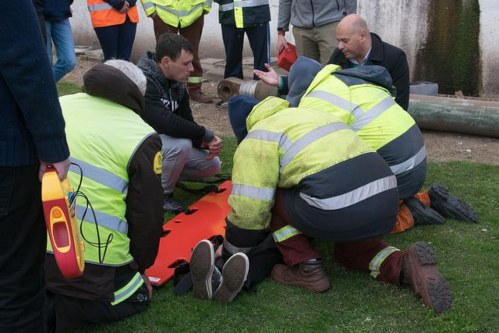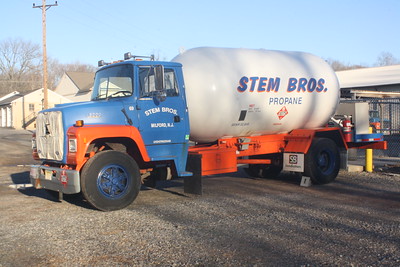
The increasing popularity of propane as an alternative to natural gas for home appliances has led many homeowners to consider converting their gas stoves. This comprehensive guide aims to provide you with a better understanding of the differences between natural gas and propane, the components of a conversion kit, and the steps involved in converting a gas stove to propane. Keep in mind that although it is possible to perform the conversion yourself, it is always recommended to consult a professional for safety and proper installation.
Can It Be Converted?
A gas stove can be converted from natural gas to propane or vice versa. The process involves changing the orifices (the small openings where the gas flows through), adjusting the air shutter, and sometimes replacing the regulator.
Most gas stoves are designed to work with either natural gas or propane, but they require different pressure levels and orifice sizes for proper combustion. Natural gas typically operates at a lower pressure than propane, and the orifices for natural gas are larger.
To convert a gas stove from natural gas to propane, you will generally need a conversion kit specific to your stove’s make and model. The kit will usually include the appropriate propane orifices, a new pressure regulator (if needed), and instructions on how to make the conversion.
Here are the general steps to convert a gas stove to propane:
- Locate and remove the orifices: Find the orifices for each burner and oven, typically located under the burner cap or behind the oven’s lower panel. Remove them using a wrench or appropriate tool.
- Replace natural gas orifices with propane orifices: Install the propane orifices from the conversion kit, ensuring they are correctly seated and tightened.
- Adjust the air shutter: To achieve the correct air-to-gas mixture for propane combustion, adjust the air shutter on each burner. This may require some trial and error, as the ideal setting varies depending on the stove model.
- Replace the pressure regulator (if necessary): If the conversion kit includes a new pressure regulator, replace the existing one following the provided instructions.
- Reconnect the gas line and test the stove: Turn on the propane supply and carefully test each burner and oven to ensure proper ignition and flame. Monitor for any potential gas leaks and address them immediately.
It is highly recommended that you hire a qualified technician or contact the stove manufacturer for assistance with the conversion process, as improper conversion can lead to inefficient combustion, poor performance, or even dangerous gas leaks.
[table id=4 /]
Why Convert Your Gas Stove to Propane?
If you’re contemplating whether to stick with natural gas or switch to propane for your stove, you’re not alone. Many homeowners grapple with this decision. Let’s explore some compelling reasons why you might consider making the switch:
Cost Advantages
- Comparative Pricing: Depending on where you live, propane might be more cost-effective than natural gas. This could be attributed to lower transportation and distribution costs or perhaps a local surplus of propane.
- Bulk Buying: Have you considered that propane can be stored in large tanks? This allows you to buy in bulk when prices dip, potentially saving you money in the long run.
- Infrastructure Savings: If your area lacks the infrastructure for natural gas, establishing a new connection might strain your wallet. In contrast, setting up a propane tank can be more budget-friendly.
Regional Availability
- Remote Locations: If you’re in a rural or isolated location without easy access to natural gas pipelines, propane can be a lifesaver. It’s often available in tanks that are delivered right to your doorstep.
- Portability Benefits: Propane tanks come in various sizes, offering versatility, especially if you’re in an area where a fixed pipeline isn’t an option.
- Stable Supply: Are you worried about interruptions in your natural gas supply? With propane, you’re banking on a more stable energy source, especially in areas where natural gas can be unreliable.
Efficiency and Cooking Performance
- More Heat, Less Volume: Did you know propane has a higher energy content per cubic foot than natural gas? This means you get more heat without using as much fuel.
- Cook Faster: With its higher BTU output, propane can help you boil that pot of water faster or get that perfect sear on your steak.
- Precision in Your Hands: Propane stoves often offer a more adjustable flame, giving you the precise temperature control you need for your culinary masterpieces.
- Consistent Cooking: If you value consistency in your dishes, propane delivers a steady heat output, which many chefs and avid cooks appreciate.
So, if you’re weighing the pros and cons of natural gas vs. propane, remember that choosing propane could offer you tangible benefits in terms of cost, availability, and cooking performance. The decision is yours!
Understanding Energy Content: Natural Gas vs. Propane
Are you trying to decide between natural gas and propane? It’s essential to grasp their energy differences and how they mix with air. Here’s a straightforward breakdown for you:
Heat Energy (BTU Output)
- What’s BTU?: Think of BTU (British Thermal Unit) as a measure of heat energy. The higher the BTU, the more heat you get.
- Propane vs. Natural Gas: Propane gives you more heat for the same amount. In simple terms, propane can offer around 2.5 times the heat of natural gas for the same volume.
- In Your Kitchen: Using propane? You might boil water or cook meals faster due to its higher BTU.
Mixing with Air (Air-Fuel Mixture)
- Why It Matters: To burn safely and efficiently, both gases need to mix with air in the right ratio.
- Natural Gas: This gas needs more air to burn right. Imagine it as roughly 10 parts air for every 1 part of natural gas.
- Propane: Propane needs less air. It’s more like 24 parts air for every 1 part of propane.
- Switching Gases?: If you’re thinking of switching, you’ll have to adjust your burner settings to get the right mix.
In short, propane provides more heat but needs a different air mix than natural gas. Knowing this helps you use each fuel effectively, ensuring you get the best results in heating or cooking. If you want to do the opposite, from propane to natural gas, you can do it as well.
Gas Stove Conversion Kits
To convert a gas stove from natural gas to propane, you will need a conversion kit tailored to your specific stove model. These kits include the essential components for a successful and safe conversion, making the process more straightforward for homeowners and technicians alike:
- Propane orifices: These small, specialized components replace the existing natural gas orifices, ensuring proper fuel flow and combustion. Propane orifices are designed to accommodate the fuel’s higher pressure and energy content, making them critical to the safe operation of the converted stove.
- Pressure regulator: Some stoves may require a different pressure regulator for propane use, which is included in the kit. The pressure regulator is responsible for controlling the flow of propane from the fuel source to the stove, maintaining the appropriate pressure level for optimal combustion and safety.
- Gas hoses and fittings: In some cases, the conversion kit may include new gas hoses and fittings designed specifically for propane compatibility. These components are crucial for establishing a secure connection between the stove and the propane fuel source, reducing the risk of gas leaks.
- Instructions: Detailed instructions are provided to guide you through the conversion process, including any necessary adjustments to the air shutter for optimal combustion. These instructions often contain information on safety precautions, proper installation techniques, and troubleshooting tips to help ensure a successful conversion.
- Additional accessories: Some conversion kits may also come with extra accessories, such as specialized tools for removing and installing orifices, or temperature conversion charts to help you adjust the oven settings for accurate baking and cooking with propane.
To locate the appropriate conversion kit, consult your stove’s user manual or reach out to the manufacturer for guidance. Providing your stove’s make, model, and serial number will help ensure that you receive the correct kit for your specific appliance. Keep in mind that using a conversion kit designed for a different stove model may result in improper combustion, safety hazards, or damage to the appliance.
By investing in a high-quality, model-specific conversion kit, you can significantly increase the likelihood of a smooth and safe transition from natural gas to propane for your stove. Remember to follow the provided instructions carefully, and consult a professional technician if you are uncertain about any aspect of the conversion process.
Key Components Involved in the Conversion
Considering a switch from natural gas to propane for your stove? Here’s a straightforward guide to the essential parts you’ll need to understand and adjust during the conversion:
Gas Valves or Orifices
- What Are They?: Think of orifices as tiny nozzles that control the flow of gas to your burners.
- Natural Gas vs. Propane: The orifices for each gas are different in size because propane has a higher pressure and energy content than natural gas.
- For You: If you’re converting, you’ll either need to replace these orifices or adjust them to ensure the right amount of propane reaches your burners.
Pressure Regulators
- Their Role: These devices control the gas pressure delivered to your appliance, such as a gas grill.
- The Difference: Propane typically operates at a higher pressure than natural gas. So, the regulator settings for the two gases are different.
- Your Action: When converting, you’ll need to swap out or adjust the pressure regulator to handle propane’s higher pressure safely.
Burner Air Adjustments
- Why Adjust?: Proper combustion requires the right mix of air and fuel. The burner’s air settings ensure this optimal mix.
- The Change: Since propane and natural gas have different air-fuel mixture requirements, you’ll need to tweak the air settings when switching.
- For Optimal Use: Adjusting the burner’s air intake will help you get the most efficient burn and best cooking performance with propane.
In essence, if you’re thinking of converting from natural gas to propane, these are the key components you’ll deal with. Ensuring they’re correctly set up is vital for both safety and performance. It might sound a bit technical, but with the right guidance or professional help, you’ll be cooking with propane in no time! By the way, I want to read this requirement.
Steps in the Conversion Process
If you’re contemplating converting your stove from natural gas to propane, understanding the steps involved is crucial. Here’s a simple step-by-step guide to help you through the process:
1. Shutting Off the Gas and Ensuring Safety
- For You: Before you begin any work, always turn off the gas supply. Safety comes first, and this step is non-negotiable.
- Extra Tip: Clear the area around the stove, ensuring there’s no open flame or ignition source nearby.
2. Replacing or Adjusting the Stove’s Orifices
- The Why: As mentioned, propane and natural gas have different pressures. The orifices control the gas flow, so they need to match the gas type.
- For You: Depending on your stove model, you’ll either replace the orifices with ones designed for propane or adjust the existing ones.
3. Modifying the Pressure Regulator
- The Need: Propane operates at a higher pressure than natural gas. The regulator ensures the right pressure reaches your stove.
Your Move: Switch out the current regulator with one suitable for propane or adjust the existing one (if it’s dual-purpose).
4. Adjusting Air Supply for the Burners
- Importance: The right air-fuel mix ensures efficient and safe combustion.
- For You: Adjust the burners’ air shutters or vents to allow the correct amount of air for propane combustion.
5. Testing the Stove Post-Conversion
- Leak Check: After assembling everything, use a soap-water solution to check for gas leaks around connections. Bubbles will form if there’s a leak.
- Combustion Check: Light the burners. The flame should be blue with a yellow tip. If it’s too yellow or orange, it indicates incomplete combustion and you might need further air adjustments.
Remember, while these steps give you an overview, if you’re not comfortable or familiar with such tasks, always consider hiring a professional. They’ll ensure the conversion is done safely and efficiently, giving you peace of mind as you enjoy your newly converted stove.
Importance of Hiring a Qualified Technician for Gas Stove Conversion
Converting a gas stove from natural gas to propane may seem like a straightforward task, but it involves numerous technical aspects that can be challenging for homeowners without the necessary expertise. Hiring a qualified technician to handle the conversion process is essential for several reasons:
Risks of improper conversion
Attempting a DIY gas stove conversion without proper knowledge and experience can lead to improper installation and incorrect adjustments. This, in turn, can result in inefficient combustion, poor appliance performance, and even dangerous gas leaks. A qualified technician can ensure that the conversion is performed correctly, reducing the risk of issues arising from improper conversion.
Ensuring efficient combustion and stove performance
A professional technician possesses the know-how to make the necessary adjustments for optimal combustion and stove performance. This includes fine-tuning the air shutter and calibrating the oven temperature settings to achieve the desired cooking results. By hiring a qualified technician, you can ensure your converted stove operates efficiently and effectively.
Avoiding gas leaks and other hazards
One of the most significant dangers associated with improper gas stove conversion is the risk of gas leaks. A qualified technician has the skills and tools to identify potential leak points and address them during the conversion process. Additionally, they can perform safety tests to ensure that the stove operates without any hazards, such as carbon monoxide production or fire risks.
Compliance with local regulations and warranty requirements
In some jurisdictions, gas appliance conversions must be performed by a licensed professional to comply with local regulations. Furthermore, some manufacturers may void the warranty on your stove if the conversion is not carried out by a qualified technician. Hiring a professional for the conversion process can help you avoid complications related to regulatory compliance and warranty claims.
Expert guidance and support
A qualified technician can provide valuable advice and support throughout the conversion process. They can help you select the appropriate conversion kit, guide you on any additional modifications required, and offer tips for maintaining your stove’s performance after the conversion. Their expertise can be invaluable in ensuring a successful and long-lasting transition to propane.
The Allure and Risks of DIY
Allure:
- Cost Savings: One of the most significant draws of DIY is the potential for cost savings. By only paying for the necessary parts, homeowners might save on labor costs.
- Personal Satisfaction: There’s a sense of accomplishment in completing a task yourself. DIY projects can be gratifying and offer a chance to learn new skills.
Risks:
- Safety Concerns: Gas conversions can be dangerous. Errors can lead to gas leaks, fires, or even explosions. Without the proper know-how, homeowners might unknowingly put themselves at risk.
- Inefficiencies: An incorrect conversion might result in the appliance not operating at its optimum, leading to increased fuel consumption and reduced efficiency.
- Voided Warranties: As mentioned earlier, DIY conversions can void appliance warranties, leading to potential complications if repairs are needed later.
When it’s Feasible and When it’s Not:
- Feasible: If a homeowner has experience with gas appliances, possesses the necessary tools, and has a comprehensive guide or kit designed specifically for their appliance, DIY might be an option.
- Not Advisable: For those unfamiliar with gas conversions, those who own high-end or complicated appliances, or when the manufacturer explicitly requires professional installation, it’s best to opt for a professional.
Natural Gas vs. Propane: Understanding the Key Differences
Natural gas and propane are both common sources of fuel for home appliances such as stoves, ovens, and water heaters. Although they share some similarities, there are important differences between the two that impact their compatibility with various appliances:
- Composition: Natural gas primarily consists of methane, while propane is derived from both petroleum refining and natural gas processing.
- Energy content: Propane boasts a higher energy content per unit volume compared to natural gas, delivering more heat per unit.
- Pressure: Propane is typically stored at a higher pressure than natural gas, necessitating different pressure regulators and orifice sizes for appliances.
- Orifice size: Due to the differences in pressure and energy content, propane requires smaller orifices for proper combustion compared to natural gas.
Maintenance Considerations Post-Conversion
Converting your stove from natural gas to propane is not merely a one-time task; it introduces a new set of maintenance considerations. Propane, while efficient and commonly used, has specific requirements to ensure safe and effective operation. Here’s what you should know:
Unique Maintenance Needs for Propane-Fueled Stoves:
- Orifice Cleaning: Unlike natural gas, propane often requires a smaller orifice for optimal combustion. This smaller opening can clog more easily. Regularly check and clean these orifices to ensure an even and efficient flame.
- Air Intake Adjustments: Propane typically requires more oxygen than natural gas for efficient combustion. This might mean adjusting the air intake periodically to get a blue flame, which indicates complete combustion.
- Monitor for Soot: Propane can sometimes produce soot if it doesn’t combust completely. If you notice soot accumulating at the bottom of your cookware or around burners, it’s an indication that the stove isn’t burning the propane efficiently, and adjustments may be required.
- Hose and Connector Inspections: Propane hoses and connectors can deteriorate over time. Periodically check for cracks, wear, or any signs of leakage.
- Propane Tank Maintenance: If your stove is directly connected to a propane tank, monitor the tank’s level and ensure it doesn’t run too low. Also, inspect the tank for rust, dents, or other damages.
In Conclusion
Converting a gas stove from natural gas to propane is a practical and effective solution for homeowners seeking an alternative fuel source. Understanding the differences between natural gas and propane, as well as the components and purpose of a conversion kit, is crucial for a successful transition.
However, it is essential to prioritize safety and efficiency by hiring a qualified technician to perform the conversion. A professional can help mitigate the risks associated with improper conversion, ensure optimal combustion and stove performance, and maintain the safety and integrity of your appliance. By taking the appropriate steps and consulting with an expert, you can confidently transition to propane and enjoy the benefits it offers for your home and cooking needs.

Jeremy is a highly experienced professional propane technician with over 21 years of experience in the industry. Throughout his career, he has gained extensive knowledge and expertise in propane gas installation, maintenance, and repair, as well as in ensuring safety and compliance with industry standards. Mike has worked with various residential, commercial, and industrial clients, providing top-notch services and solutions to meet their propane needs. He is dedicated to his craft and passionate about delivering exceptional service to his clients.




